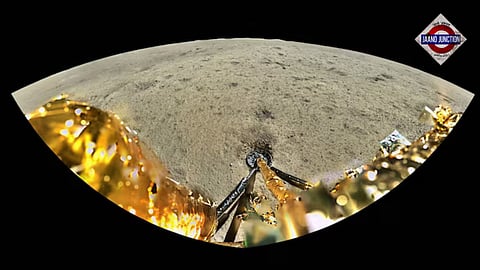

China's Chang'e-6 spacecraft has delivered results even before the rocks and soil it collected could reach Earth. A European Space Agency probe that tagged along with the Chinese spacecraft has made a new discovery on the Moon's far side.
The first European instrument to land on the Moon detected the presence of negative ions on the lunar surface. These could be produced through interactions with the solar wind.
The Negative Ions at the Lunar Surface (NILS) instrument being operated by European scientists confirmed the detection of a new component of plasma at the surface of the Moon. This opens a new window for space physics and for human and robotic missions in an era of renewed lunar exploration.
“This was ESA’s first activity on the surface of the Moon, a world-first scientifically, and a first lunar cooperation with China. We have collected an amount and quality of data far beyond our expectations,” says Neil Melville, ESA’s technical officer for the experiment.
The solar wind, a steady stream of radiation and particles from the Sun, is deflected by Earth's magnetic field. The Moon, lacking a magnetic field and with a thin exosphere, reacts differently. When solar wind strikes the Moon, it releases secondary particles.
On the Moon's far side, observed by Chang'e-6, these particles can be positively or negatively charged or neutral. While positive particles have been measured from orbit, detecting negative ions was challenging. Since negative ions are short-lived and can't reach orbit, European scientists had to place their instrument close to the lunar surface, a first for a particle detector.
Experts, who are ecstatic over the discovery, said that these observations on the Moon will help us better understand the surface environment and act as a pathfinder to explore negative ion populations in other airless bodies in the Solar System, from planets to asteroids and other moons.
The experiment landed aboard China's Chang'e-6 spacecraft on the Moon's far side in a huge crater known as the South Pole-Aitken Basin.
NILS began collecting science data 280 minutes after landing. The first session lasted 23 minutes before the instrument reverted to low voltage. Subsequent data collection occurred in short bursts between communication blackouts and reboots. These short bursts alternated with long cooling-off periods due to the instrument overheating. Remarkably, NILS remained within its thermal design limits and managed to recover despite the extreme heat.
Chang'e-6 is now on its way back to Earth with fresh samples from the unexplored far side of the Moon.
